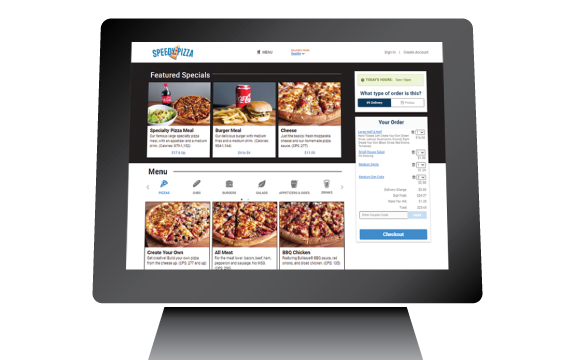What do your customers need to know when they place an order with you? What do they need to know about your menu, your restaurant, or your website? Your online ordering site is a wonderful sales channel that allows your customers to order for themselves, at their own pace. But when ordering online, your customers aren’t able to ask you questions, so to avoid frustration, calls to the store, or even cart abandonment, you need to ensure all the information they need is available and easy to find.
Below is a list of information that needs to be on your online ordering site for your customers to find.
1. Your Hours
Your restaurant’s hours of operation need to be listed prominently on your website (as well as on your Google My Business Page) so that your customers know when they can place an order. Ensure you include any holidays or special closures for holidays, training, renovations, etc. as well. If your store allows deferred orders to be placed when the store is closed, the site should mention this.
2. Location
Where is your restaurant located? What’s your address for pick-up? What’s your delivery area? Do you have multiple locations, or just one? Remember, you may think that everyone in town knows where your restaurant is, but what if someone from across the country lands on your website thinking they are ordering from a local place with a similar name? What if tourists from out of town want to pick up a pizza?
If you are part of a franchise or multi-unit chain, you need to ensure the ordering site makes it clear to customers which location their order is being prepared at. This is especially important for pick-up orders.
For easier ordering, the site should auto-assign an initial location to customers based on past ordering history and their location.
Your site should also have a page where customers can pick their preferred location. Work with your head office to show links to the online ordering sites for other franchised locations, if you don’t share an online ordering site already.
3. Contact Information
How can your customers get in touch with you if they have questions or issues with their order? Ensure your site has a page with a clickable phone number and your address.
4. Privacy Policy & Terms of Use
Before designing your online ordering site, take some time to check into your local regulations. You will probably need to include a Terms of Use and a Privacy Policy page that covers what information your site collects and how your business uses it. This might be information that your customers give you, like their name, address, email, and order information, or it might be information your site collects on its own, like IP addresses.
5. Menu Details
When you wrote your menu, did you write it expecting your servers and cashiers to explain specials or be there to answer questions? Read through your menu and ask yourself if you understand what each menu item is, just from the image and description—if not, it’s time for a rewrite.
Remember, your online ordering site is designed to be self-serve, so your menu item descriptions need to pre-emptively answer any questions that might come up. For instance, say you are ordering pizza online but you don’t like green peppers, and you’re allergic to onions. Reading through the different menu items, are all of the ingredients listed? Are you able to stay away from the pizzas with green peppers? Or is there a way to request a modification? What about the onions? Is there somewhere the customer can specify that they have an allergy during the order or checkout process?
Maybe your customer doesn’t have any allergies but has two small children that are going to share a pizza. One of the kids loves pepperoni, and the other one will throw a fit if it’s on her plate. Can you accommodate the half-and-half pizza? How can the customer enter that information?
6. Dietary Information
This is something that should be listed in the menu descriptions, but I wanted to call special attention to it. In some states and provinces, you need to let your customer base know about the number of calories in each menu item (and some other mandated information.) Chances are, this is information that you already provide in your restaurant. It also needs to be listed on each menu item on your website.
7. Features, Coupons & Specials
Everyone loves a good deal, and if deals and specials are part of your marketing strategy, they need to be displayed prominently on your website. Some sites provide a customizable “featured specials” area at the top of the main menu page where you can add the current specials.
Some online ordering sites will automatically add any coupons and discounts, while others will have a field to enter a coupon code. No matter how you choose to offer up specials and discounts, it’s important that your customer understands that this is not the regular price.
While all this information is important on your site, you still need to decide the best way to display it. That decision needs to take your restaurant branding into account. Next week, I’ll be talking with Todd Vierra of Spinato’s Pizza and Domenick Colandrea of King’s Pizza Pronto about how they incorporated their brands into their online ordering site. You can register for the webinar on Pizza Marketplace.
Posted on Thu, Jul 15, 2021 @ 07:07 AM.
Updated on July 25, 2024 @ 6:52 PM PST.

